
For decades, Bowser has been the main villain in Nintendo’s ‘Super Mario’ games. As the Koopa King, this powerful, dragon-like turtle is known for his tough armor, fiery breath, and habit of kidnapping Princess Peach. While appearing in many different types of games – from classic platformers to role-playing adventures – Bowser always feels consistent thanks to his impressive power, large size, and dramatic presentation, while still fitting the unique gameplay and technology of each new title.
Bowser is more than just a boss to fight; he’s a fully developed villain with a complex world around him. He commands a structured army, controls large lands, and even appears in role-playing games that show how his kingdom functions. Whether in classic Mario games like ‘Super Mario Bros.’ and ‘Super Mario Odyssey’ or spin-offs like ‘Mario Kart’ and ‘Super Smash Bros.’, Bowser is one of the most detailed villains in gaming, with well-defined powers, different forms, established connections to other characters, and a rich backstory.
The Long-Running Mainline Antagonist
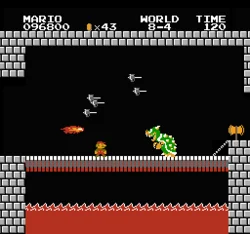
Bowser is the main villain in almost every core ‘Super Mario’ game, starting with the original ‘Super Mario Bros.’ and continuing through titles like ‘Super Mario World’, ‘New Super Mario Bros. U’, and ‘Super Mario Odyssey’. He consistently tries to take over the Mushroom Kingdom and kidnap Princess Peach. While his goal stays the same, each game introduces new challenges when fighting Bowser, with different boss battles, tricky levels, and impressive scenes.
Bowser’s final battles in different Mario games usually make clever use of each game’s unique features—like cutting bridges in older games, navigating 3D arenas in ‘Super Mario 64’, using gravity in ‘Super Mario Galaxy’, and taking control of things in ‘Super Mario Odyssey’. This means Bowser feels like the ultimate test of everything you’ve learned in each game, rather than just a simple fight.
Signature Fire Breath and Shell Armor
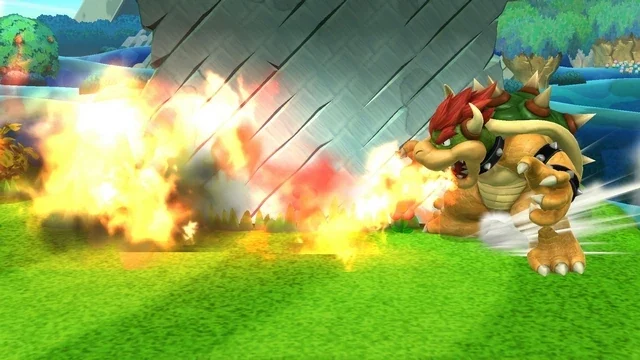
Bowser consistently attacks with long-range fire breath and a spiky shell he uses for both defense and offense. The way he uses fire changes depending on the game—it might be a predictable arc in older games, a stream you can follow in 3D arenas, or even fire that chases you in later stages. This means players need to carefully time their jumps, find cover, or wait for Bowser’s attacks to cool down before striking.
The Koopa Troopa’s shell is a key element in how levels are designed and how damage works in games. Many games avoid letting players directly hit enemies from above, encouraging them to use ranged attacks, traps, or other methods. In games with realistic physics, like ‘Super Mario 3D World’, the shell’s spinning, shockwaves, and charging attacks create dangerous areas that influence the layout of platforms and where players can safely stand.
Kingdoms, Fortresses, and the Koopa Chain of Command
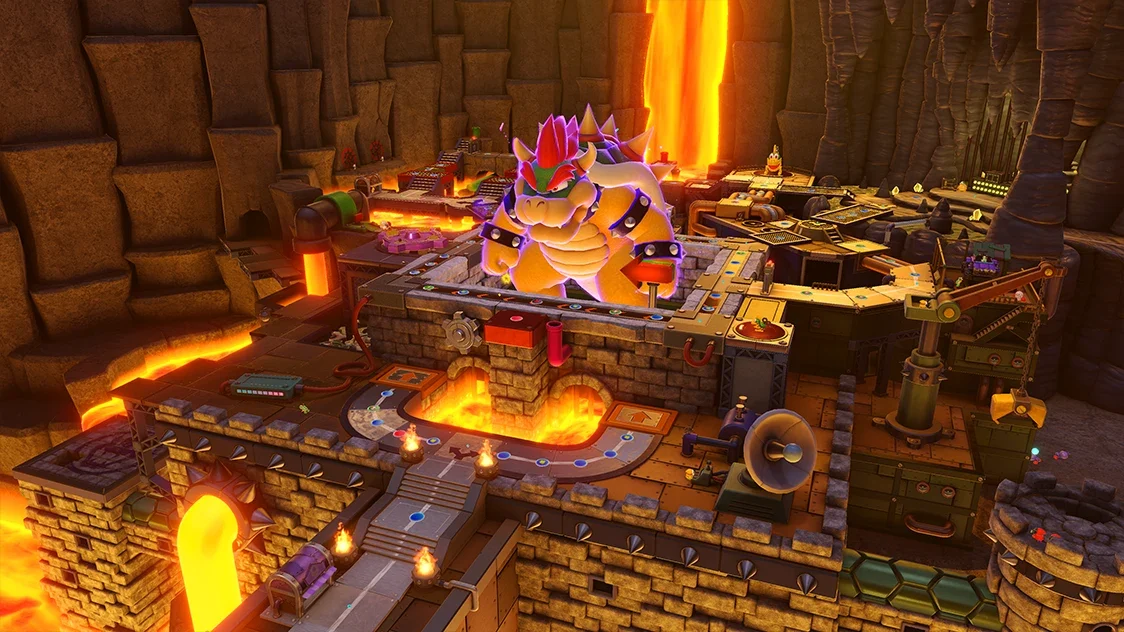
Bowser, known as the King of the Koopas, controls a kingdom filled with things like airships, lava castles, and huge fortresses. In ‘Super Mario Bros. 3’ and later games, he commands different types of enemies—including Goombas, Koopa Troopas, and Hammer Bros.—that become increasingly challenging, starting with small fights and leading to big battles at his strongholds.
The game’s design reveals how Bowser operates on a large scale: he uses airships to transport his bosses, and his fortresses require players to find keys and solve puzzles to advance. Later in the game, his castles become even more complex, combining traps with patrolling minibosses. ‘Super Mario Odyssey’ builds on this by introducing Bowser’s Kingdom, a fortress inspired by Japan that visually showcases his power and features enemies fitting his style.
Playable Bowser in RPGs and Spin-Offs
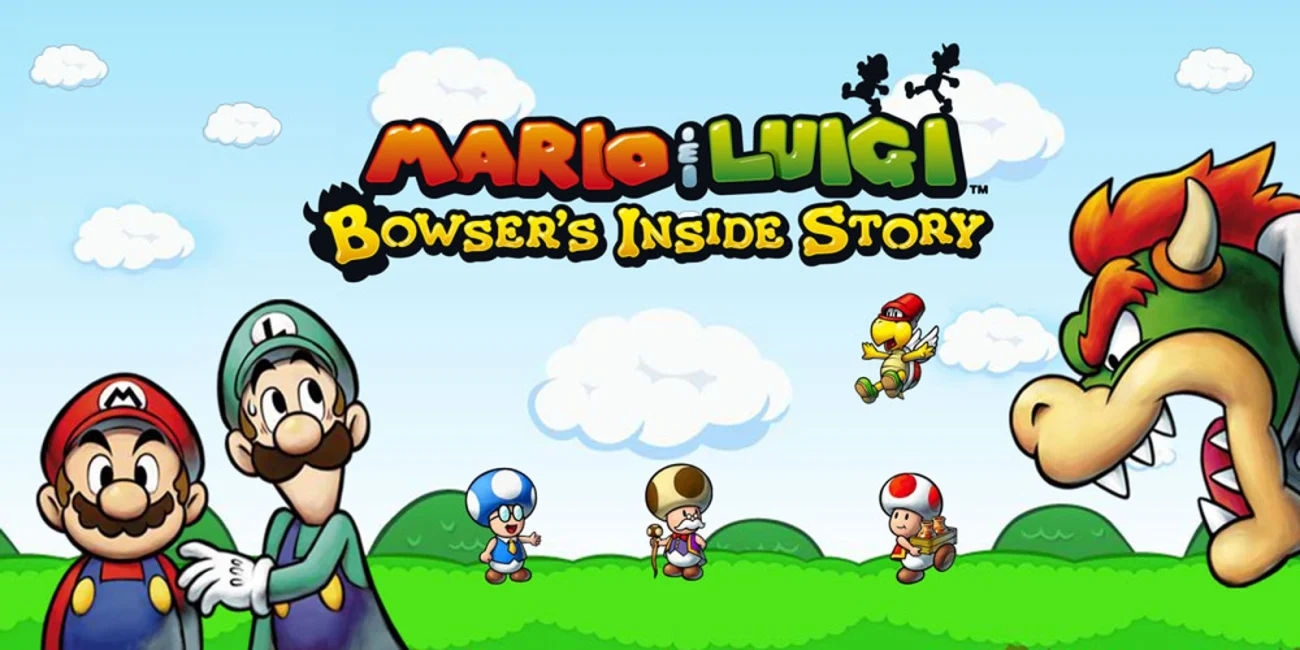
Although Bowser is typically the last boss you fight, some Mario games actually let you *play as* him. ‘Mario & Luigi: Bowser’s Inside Story’ is a great example – you explore the game world as Bowser, use his power to overcome obstacles, and participate in huge battles where his size is a key part of the gameplay. The game also shows how Bowser commands his troops and deals with his enemies.
When playing competitive spin-off games, Bowser is a playable character known for his powerful build. In ‘Mario Kart,’ he’s usually slower to accelerate but gains speed and can powerfully bump other players. ‘Mario Party’ takes it further, with Bowser actively changing the game board, introducing unique dice, and even special modes that make him a central rule-setter instead of just a random obstacle.
Transformations: Dry Bowser, Fury Bowser, and More
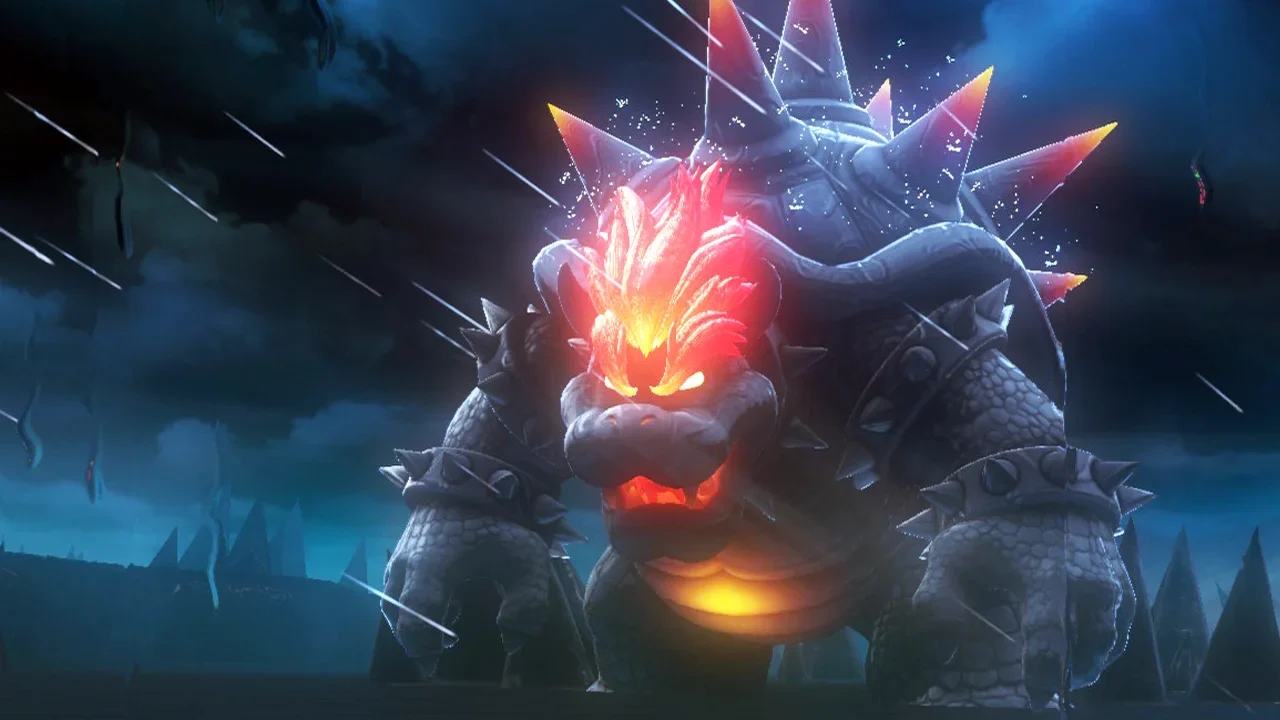
Bowser changes forms for specific reasons in the games, both to affect how the game is played and to tell the story. For example, Dry Bowser is a skeletal, undead version that’s tougher and attacks differently, and often appears in extra-hard challenges. Giga Bowser is an incredibly powerful form in the ‘Super Smash Bros.’ series, made larger and more durable to show players they’re facing a major boss.
Bowser’s transformations change how each game plays. In ‘Super Mario 3D World,’ Meowser adds cat-like moves to climbing-focused levels. In ‘Bowser’s Fury,’ Fury Bowser brings giant, timed storms that change the game world and create challenging, but rewarding, gameplay. These different forms keep each game fresh by changing how battles flow and encouraging players to try new strategies.
Family Ties: Bowser Jr. and the Koopalings
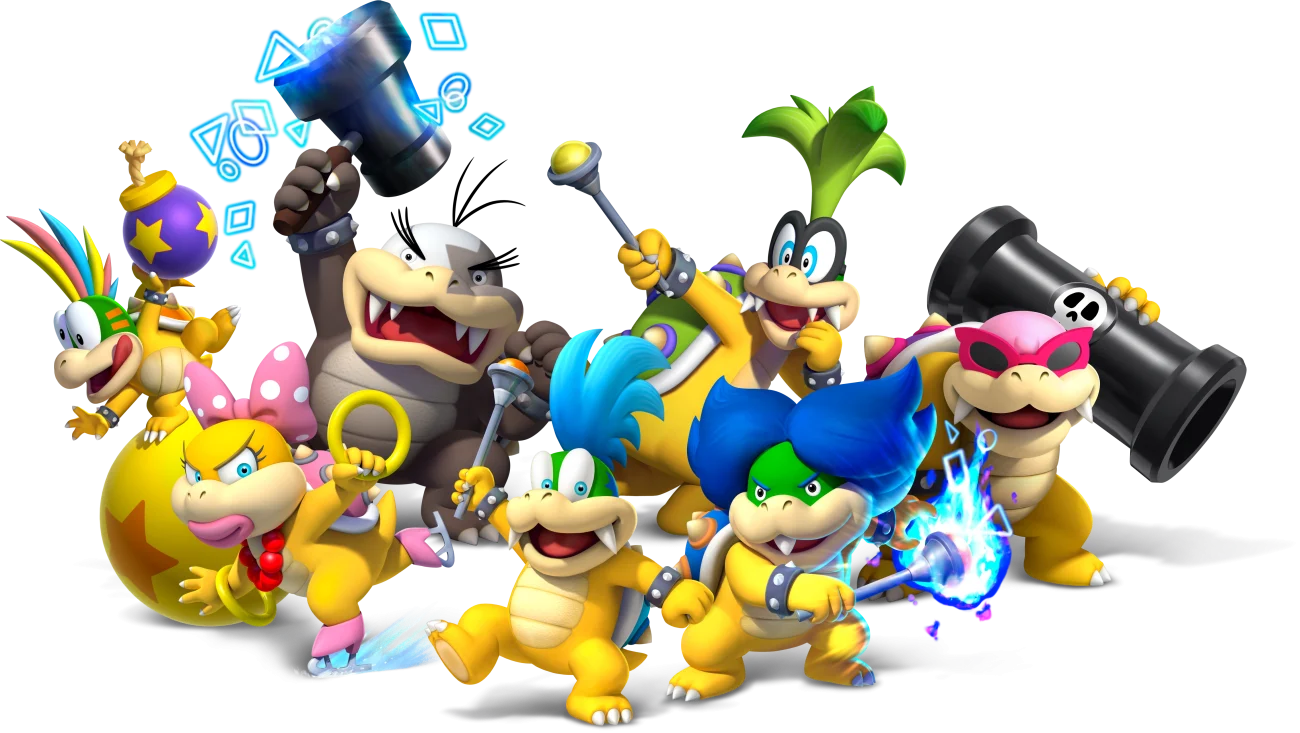
Bowser’s team includes Bowser Jr. and the Koopalings – Larry, Morton, Wendy, Iggy, Roy, Lemmy, and Ludwig – who serve as his main helpers and challenging opponents in many Mario games. Bowser Jr. often leads the charge, using his Clown Car for attacks – sometimes with paint in ‘Super Mario Sunshine’ and later with various gadgets during boss battles.
The Koopalings make each level feel different with their special weapons and ways of moving—they can change the ground, drill through areas, and bounce shells in unique patterns. This creates a predictable rhythm of challenging mid-boss fights. They also help structure longer adventures with stages like capturing airships, reclaiming fortresses, and scaling castles, all showing a clear hierarchy under Bowser’s command.
Boss Design That Showcases Game Systems
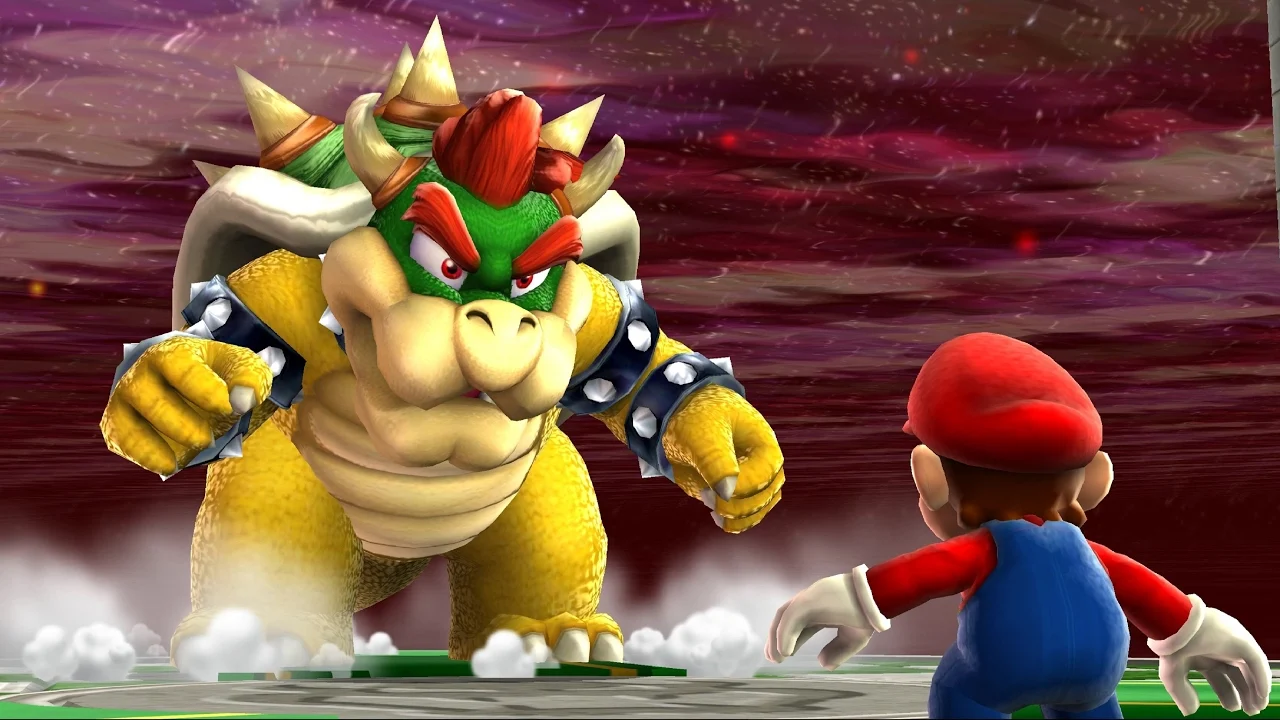
Bowser battles in Mario games consistently help players learn and practice skills they’ve just been introduced to. For instance, ‘Super Mario 64’ taught players how to grab and throw, ‘Super Mario Galaxy’ focused on swinging through gravity, and ‘Super Mario Odyssey’ used the capture mechanic for platforming challenges. These fights cleverly turn Mario’s key moves and the game’s physics into clear, predictable patterns.
Designers frequently build challenges in stages, adding new clues, expanding the areas players must avoid, and incorporating interactive elements like switches, bombs, and rising lava. This gradual increase in difficulty lets players demonstrate their skills without learning entirely new mechanics. Essentially, Bowser serves as a comprehensive test of everything players have learned throughout the game.
Characterization in the RPG Series
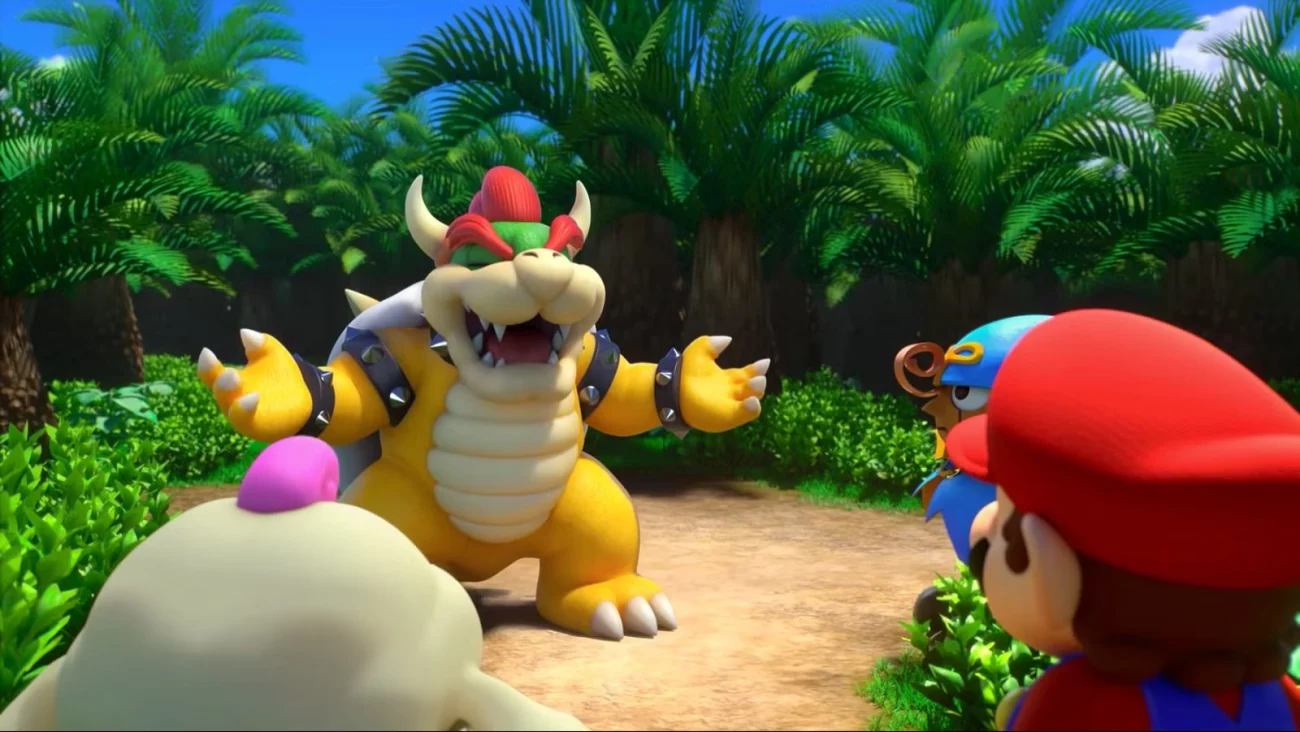
Games like ‘Paper Mario’ and ‘Mario & Luigi’ give Bowser a lot more personality than just being the villain. They show us how he leads his troops, deals with limited resources, and interacts with his rivals through funny conversations and scenes. These games establish a clear picture of how he makes deals, responds to failures, and plans his attacks against Mario and his friends.
In role-playing games, Bowser’s strength is shown through numbers, skills, and unique attacks, but he remains recognizable as a powerful, defensive, and area-dominating character. The game’s stories often show him working with others temporarily or reveal his motivations and how the Koopa Troop functions.
Crossovers and Platform-Specific Cameos
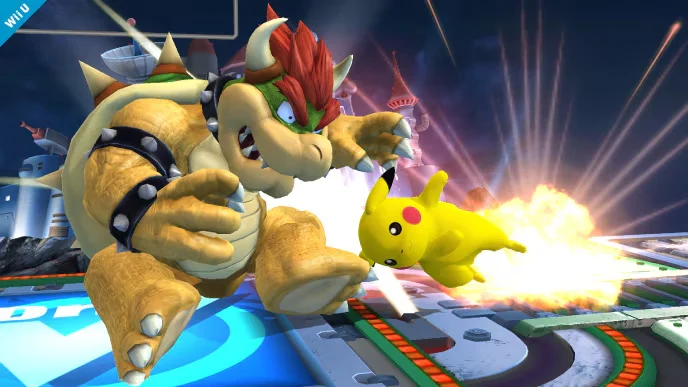
Bowser’s appearances in games like ‘Super Smash Bros.’ have solidified his status as one of Nintendo’s most important characters. In ‘Smash Bros.’, he’s a powerful, heavy fighter who excels at grabbing opponents, has defenses on some attacks, and a devastating final attack that showcases his size and strength. While his moves have been adjusted and improved over time, he consistently maintains his core fighting style.
Beyond fighting games, Bowser made a guest appearance in ‘Skylanders: SuperChargers’ for Nintendo consoles. He came with a special Amiibo figure that could function as both a ‘Skylanders’ character and a ‘Super Mario’ character. This allowed Bowser’s brand to be featured in a different type of game—one that used physical toys—without changing who he is or what he can do.
Visual and Audio Design Consistency
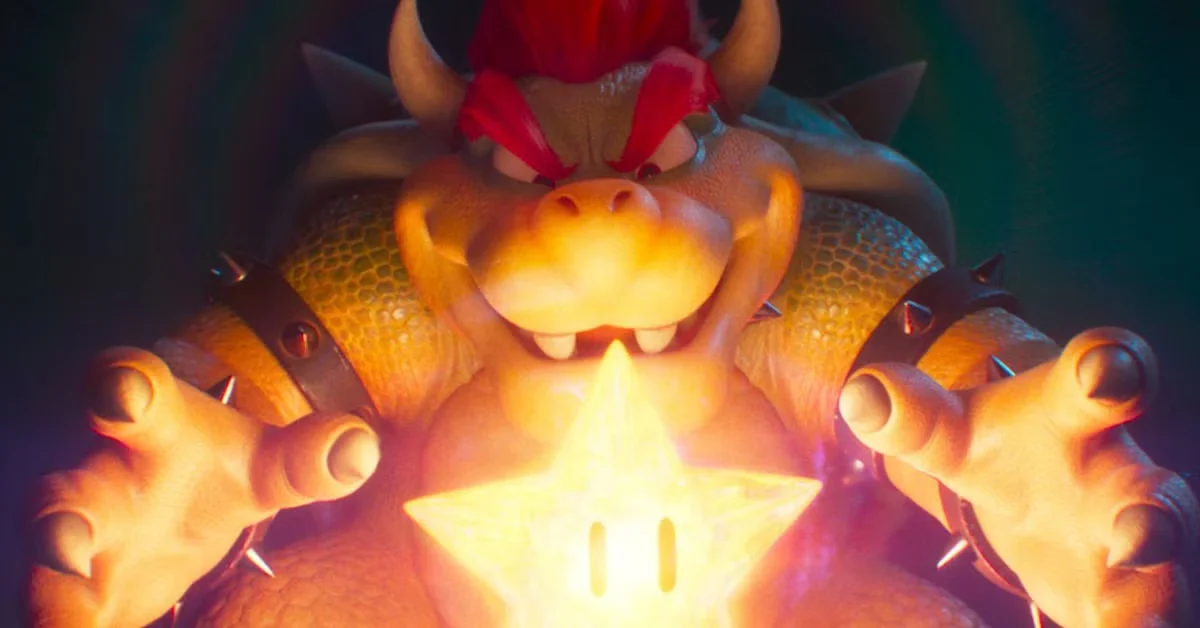
Bowser’s distinct shape—with his shell, horns, and spiked wristbands—remains recognizable in every game, no matter the graphics quality or art style. Animators adjust details like his jaw, claws, and shell spikes to show how dangerous he is, whether he’s a 2D sprite or a 3D character, all while making sure he still stands out clearly against complex backgrounds.
The creature’s sound design makes him feel powerfully real, using a rough voice, booming footsteps, and recurring musical themes. The sound team carefully times his roars with his attacks and uses deep bass to emphasize his size, so players can understand what he’s doing—whether he’s angry, rushing forward, or weak—even if they aren’t looking directly at him.
Share your favorite Bowser moment or transformation in the comments!
Read More
- Silver Rate Forecast
- Красный Октябрь акции прогноз. Цена KROT
- Gold Rate Forecast
- MSCI’s Digital Asset Dilemma: A Tech Wrench in the Works!
- Bitcoin’s Ballet: Will the Bull Pirouette or Stumble? 💃🐂
- Ethereum’s $3K Tango: Whales, Wails, and Wallet Woes 😱💸
- Brazil Bank & Bitcoin: A Curious Case 🤔
- Monster Hunter Stories 3: Twisted Reflection gets a new Habitat Restoration Trailer
- Dogecoin’s Big Yawn: Musk’s X Money Launch Leaves Market Unimpressed 🐕💸
- Itaú’s 3% Bitcoin Gambit: Risk or Reward?
2025-10-08 08:46